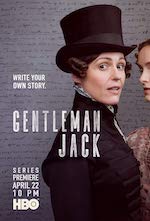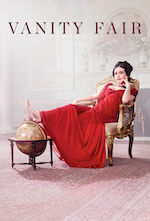After taking readers on a dazzling tour of Regency astronomy, naturalism and embroidery in The Lady’s Guide to Celestial Mechanics, Olivia Waite is back with another gloriously nerdy, rigorously researched historical romance. The Care and Feeding of Waspish Widows follows printer Agatha Griffin and beekeeper Penelope Flood as they fall in love, against the tumultuous, chaotic backdrop of Britain circa 1820.
In this essay, Waite explains why printing and beekeeping are not only fascinating topics in and of themselves, but also perfectly suited to tell a story of radical love, together.
Bees and people have an ancient relationship. There are cave paintings of honey hunters dating back eight thousand years, before the dawn of anything like modern history. And for nearly as long, people have been seeing in beehives a utopian idea of what human society could be. In newly imperial Rome, Virgil wrote of bees as both valiant warriors and obedient subjects bound in service to their king (as he mistakenly called the queen bee). People saw from very early on that different bees performed different jobs to support the hive as a whole, and this combination of communal good and social stratification made bees a popular symbol for political idealists of nearly every stripe.
When you start thinking of bees as people, you want them to have the best possible home.
So it’s not surprising that during the late 18th and early 19th century—a time chock-full of Western revolutions, uprisings, monarchist backlash and democratic zeal—one of the great goals of science was designing a new and better beehive. Skep hives, round domes woven of straw, had been in common use in Northern Europe for centuries; they were cheap to make and easy to care for. They were not, however, easy for people to get honey out of without killing every bee inside, often using sulphur smoke that tainted the taste of the honey. The killing wasn’t necessarily a problem for many farming folk—after all, people raised cows and pigs and chickens for butchering—but it increasingly became a problem for scientifically minded beekeepers.
After all, if bees are a bit like people, then killing them is a bit like murder.
So while the American colonies and the French political classes were flinging off their monarchist chains (while keeping Black slave labor shackled), there was also an explosion of new hive designs, many of them strange and ambitious and weirdly charming. They were built of wood and glass and metal; they were cylinders or cabinets or jars, or the bold octagonal shape of the Stewarton hive (1819). The Langstroth hive, still used today, would eventually triumph over all these after the middle of the century, but there is something irresistibly earnest about the designs that occupied this transitional era. They’re so hopeful—ideal worlds in miniature, as utopian as the political optimists who were redesigning human societies according to democratic principles (howsoever unequally applied across race, gender and so on). When you start thinking of bees as people, you want them to have the best possible home.
My favorite design by far is the leaf hive, or folio hive, developed by blind Swiss entomologist François Huber. Using observations from his wife, Marie, and servant François Burnens, Huber made several important discoveries about honeybee anatomy, and developed an observation hive with separate rectangular sections that hinged at the back. At the front, the sections could be spread open like the pages of a book.
Reader, I fell in love.
My own relationship to bees began with my great-grandfather, who kept three Langstroth hives on a hill overlooking the sea. There was something mystical in the way he approached the hives in his veiled hat and leather gloves and removed one humming frame at a time, checking for brood and honey. I found bees in children’s books defending the protagonists against witchcraft, and bees as reincarnated human souls in Greek myths. Even nonfiction books full of bee facts gave me that telltale throb of good poetry: bee dances as complex language, their sensitivity to magnetism and electrical charges, the discovery that every worker bee’s sting was also a suicide.
And then I came across Huber and his leaf hive while reading about the history of science for The Lady’s Guide to Celestial Mechanics—and I knew I had to write a lady beekeeper for the sequel set in 1820. Too early for Langstroth, but perfect for a hive that looked like a book full of bees. I paired her with a stubborn printer, a woman and artist who was trying to walk the difficult line between vital political critique and seditious material that could get her imprisoned or worse.
There was plenty for a printer to be seditious about: 1820 was a famously tumultuous year in English social history. King George IV’s animosity for his wife burst into full flower as she returned from Italy demanding to be officially crowned. Rather than share the throne with a woman he loathed, George attempted to divorce her via a Bill of Pains and Penalties. Caroline was essentially put on trial in both in Parliament and the press: Her servants were interrogated, her household surveilled by George’s agents, her every action scrutinized for propriety by people who had reason to wish her the worst.
If I were to sum up the way the English public reacted to this threat against their queen, I could do it in one word: They swarmed.
Everyone who could write put out a pamphlet and the caricatures were passed around and chortled over like today’s best memes.
Letters were written in defense of the queen from cities and towns and trade guilds all over the country, and crowds presented them to her en masse at Brandenburg House. Londoners rioted; soldiers mutinied; angry crowds broke windows in country towns; everyone who could write put out a pamphlet and the caricatures were passed around and chortled over like today’s best memes. Women became part of the public political conversation in larger numbers than ever, despite still being barred from the vote. Some of this agitation was the result of George’s political opposition sensing an opportunity and grabbing onto it with both hands; some of it was sincere patriotism or chivalry in defense of a royal lady.
Despite the fall of Napoleon, despite the failure of the French revolutionary experiment, the English government trembled to its foundations. The divorce Bill passed the House of Lords—but was dropped since it was clear it would never make it out of the Commons, which was thronged with pro-Caroline votes.
The English people celebrated the failure of the Bill as if they’d won a great military victory. Despite the corruption of the government, the power of the landed gentry, the lack of suffrage for women and many men, the people knew their voices had been heard and their collective power felt.
Caroline never was crowned queen. She died painfully of cancer the following summer. Her funeral procession turned into a riot; two men were killed by soldiers. She had been a symbol for the radicals and reformers, but never a supporter of their ideals and push for political change. But in organizing for her cause, the reformers had developed effective tactics to appeal to the public and in print. The next few decades saw the passage of the Great Reform Act and the rise of Chartism and the early cooperative movement, among other advances.
The increasing industrialization of the Victorian era used bees more and more metaphorically, even as beekeeping itself became standardized and a foundation of the agricultural industry. In 1867, caricaturist George Cruikshank—who had drawn many of the Georgian era’s most popular and enduring cartoons—produced a reworked engraving of his British Beehive, which depicted a conservative view of English society, as orderly as any honeybee could wish. Don’t change what’s already perfect, Cruikshank implied. The same year saw the publication of the first volume of Karl Marx’s Capital, which used worker bees to argue that human labor was more than merely physical—that it had an ideal, reflective aspect that created value. People: better than bees, said Marx!
Today, bees as pollinators are vital to global food production—and yet they are increasingly threatened by environmental hazards, climate change and good old-fashioned human theft. It turns out that if we lose bees, we’ll also lose a lot of people. Domestication goes two ways: We can’t be in a historically long-term relationship with another creature and then continue normally if it vanishes.
I’m almost as worried about the bees these days as I am about people. I have to hope the story of this relationship is a romance, that people and bees will manage somehow to live happily ever after, together.







































